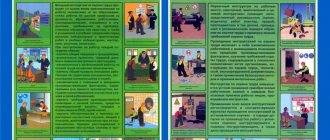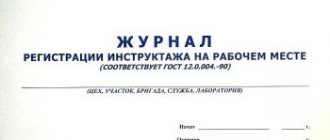Employers have the right to hire women and even minors as employees. But working conditions for these employees must be specific, since the status, health and other parameters of people are taken into account. Therefore, labor protection for women and youth is implemented at the legislative level. If the managers of various enterprises violate these conditions, they will be held accountable, and it can be not only administrative, but also criminal.
Hiring rules
Based on the requirements of the Labor Code, different working conditions are offered to both men and women, as well as minor citizens. Features of the work of women and youth are as follows:
- It is not allowed to hire a teenager or a 25-year-old man under the same working conditions;
- all citizens over 16 years of age have the right to work, but simplified conditions should be offered for people under 18 years of age;
- the employer must take into account the physical mental capabilities of each employee, and these characteristics depend on the gender and age of the person.
The working conditions of various employees are regulated at the state level.
Legislative regulation
The labor protection rules for women and youth are contained in PP No. 105 and 163, and also some standards are given in SanPiN 2.2.0.555-96 and 2.2.2/2.4.1340-03. Based on these regulations, certain areas of work are determined in which the work of minors is prohibited. Additionally, on the basis of Art. 253, 254, 259 and 298 it is prohibited to hire women for particularly difficult work.
The workplace occupied by a woman must be subject to certain hygienic requirements, in case of violation of which the employee can legally refuse to continue working.
Limitations related to physical activity
When offering jobs to women and teenagers, it is necessary to take into account what kind of physical stress the employee will have to face. The following rules are taken into account:
- Representatives of the fairer sex are not allowed to work in areas related to moving or lifting significant weights;
- throughout the entire working day it is not allowed to lift more than 7 kg;
- if work associated with lifting weights alternates with other work responsibilities, then the maximum woman can lift a load of up to 10 kg;
- There are also limit values for dynamic work.
If the above indicators are exceeded, it is advisable to hire men who can easily cope with heavy loads.
Limiting physical activity
One of the important features of women’s labor protection is the prohibition of work related to moving and lifting loads that exceed the standards established by law. Specific values are set.
Resolution No. 105 contains the following limits for moving and lifting loads:
- Constantly throughout the working day - 7 kg.
- When alternating with other work (lifting loads - at least 2 times in 60 minutes) - 10 kg.
Limit values for dynamic work occurring during an hour of a work shift have also been established:
- From the floor - 875 kgm.
- From the surface of the stand - 1750 kgm.
Please note that the weight of the lifted or moved cargo must necessarily include the weight of the packaging and other containers.
When moving objects in containers and carts, the maximum force is limited to 10 kg.
Working conditions
When looking for a job, each person evaluates the conditions under which he will have to work. Women's working conditions are regulated at the federal level. Violation of them leads to prosecution, as well as regular inspections by the labor inspectorate. Therefore, employers should remember the following rules:
- the employment of women in underground mines or under dangerous and harmful conditions is prohibited;
- the exception is sanitary or consumer services for mines or other similar facilities;
- women cannot work as truck drivers or machinists;
- if the employee is under 35 years of age, then she cannot work in a position that involves the use of any toxic substances, disinfectants or pesticides;
- pregnant employees cannot work in livestock or crop production;
- If a woman is hired to work in a kindergarten, then she must be prepared for significant physical activity.
By law, female workers must work under conditions that do not have any negative impact on the reproductive function of the body. Back in 1996, special requirements were adopted that company owners must follow in the process of arranging a workplace for female employees. Work for women must meet the requirements regarding temperature and humidity. If an employee is pregnant, then any physical activity for her should be minimal.
On the peculiarities of working conditions and labor protection for minors
Article 265 of the Labor Code of the Russian Federation prohibits the use of labor by persons under the age of eighteen years in work with harmful and (or) dangerous working conditions, in underground work, as well as in work the performance of which may harm their health and moral development (gambling business, work in night cabarets and clubs, production, transportation and trade in alcoholic beverages, tobacco products, narcotic and other toxic drugs, erotic materials).
It is prohibited for workers under the age of eighteen to carry or move heavy loads that exceed the limits established for them. The list of jobs in which the employment of workers under the age of eighteen is prohibited, as well as the maximum weight standards are approved in the manner established by the Government of the Russian Federation, taking into account the opinion of the Russian Tripartite Commission for the Regulation of Social and Labor Relations. In particular, the List of heavy work and work with harmful or dangerous working conditions, during which the use of labor by persons under eighteen years of age is prohibited, was approved by Decree of the Government of the Russian Federation of February 25, 2000 No. 163 “On approval of the list of heavy work and work with harmful or dangerous working conditions, in the performance of which the employment of persons under eighteen years of age is prohibited.” The standards for maximum permissible loads for persons under eighteen years of age when lifting and moving heavy objects manually are approved by Decree of the Ministry of Labor of the Russian Federation dated 04/07/1999 No. 7. Thus, in particular, when moving loads on carts or in containers, the applied force should not exceed:
- for boys at 14 years old - 12 kg, at 15 years old - 15 kg, at 16 years old - 20 kg, at 17 years old - 24 kg;
- for girls at 14 years old - 4 kg, at 15 years old - 5 kg, at 16 years old - 7 kg, at 17 years old - 8 kg.
An analysis of labor legislation allows us to highlight a number of other features of the working conditions of minor workers.
Thus, it is impossible to conclude an employment contract with an employee under 18 years of age for: work on a rotational basis (Part 1 of Article 298 of the Labor Code of the Russian Federation); work in a religious organization (Part 2 of Article 342 of the Labor Code of the Russian Federation). Resolution of the Chief State Sanitary Doctor of the Russian Federation dated September 30, 2009 No. 58 approved the Sanitary and Epidemiological Rules and Standards SanPiN 2.4.6.2553-09 “Sanitary and Epidemiological Requirements for the Safety of Working Conditions for Workers Under 18 Years of Age,” which establish sanitary and epidemiological requirements to the safety of working conditions for workers aged 14 to 18 years. Failure to comply with the specified working conditions is grounds for bringing the perpetrators to administrative liability established by Article 5.27 of the Code of the Russian Federation on Administrative Offences.
What specialties cannot be chosen?
Labor protection for women and youth additionally includes restrictions associated with the choice of any specialty by the fairer sex and adolescents. Women cannot work as carpenters or plumbers, mechanics or installers of any heavy equipment.
A complete list of professions that are offered exclusively to men is given in PP No. 162.
But in any situation there are exceptions, so women can be hired to work in any special position if they have permission from Rospotrebnadzor, and also if a special examination is first carried out confirming satisfactory conditions for employment.
Conditions for pregnant workers
Labor protection for women and youth in Russia is considered a significant moment for the Government. Particularly specific conditions should be provided to pregnant women, since work activity is not allowed to in any way negatively affect the unborn child. Therefore, the norms of maximum loads for pregnant women are taken into account.
In a company where a pregnant employee works, the following rules must be taken into account:
- During one work shift, lifting a load exceeding 1.75 kg in weight is not allowed;
- the total mass of cargo that can be moved by a pregnant worker within an hour and within 5 m is 60 kg;
- it is not permitted to involve such an employee in work in the field of crop production or livestock farming;
- Female workers are not allowed to work in the control room;
- they cannot work in flight activities;
- the time during which a woman can spend at the computer is limited, and some regulations completely prohibit such work;
- maximum work on the computer can last for three hours;
- According to sanitary rules, a pregnant worker cannot work in conditions where she can interact with pathogens of various infections or ultraviolet rays, or be in a draft.
Additionally, in each company for such an employee, the output or standard of service is reduced. Often, organizations transfer pregnant women to lighter work, but at the same time wages remain at the same level. At the same time, it is not allowed for the worker’s health to be affected by any harmful or dangerous factors.
CHAPTER 9. OCCUPATIONAL SAFETY FOR PERSONS UNDER EIGHTEEN YEARS OLD
General provisions
The Labor Code of the Russian Federation (Article 265) prohibits the use of labor by persons under the age of eighteen in work with harmful and (or) dangerous working conditions, in underground work, as well as in work the performance of which may harm their health and moral development. It is also prohibited for workers under the age of eighteen to carry and move heavy loads that exceed the maximum standards established for them[1].
It is prohibited to send workers under the age of eighteen to work overtime, work at night, on weekends and non-working holidays (Article 268 of the Labor Code of the Russian Federation) [2].
Persons under the age of eighteen are hired only after a preliminary compulsory medical examination (examination) and subsequently, until they reach the age of eighteen, are annually subject to a compulsory medical examination (examination) (Article 266 of the Labor Code of the Russian Federation) [3].
When concluding employment contracts (agreements), employees under the age of eighteen may be provided with additional benefits and improved working conditions.
The list of jobs in which the use of labor by workers under the age of eighteen is prohibited, as well as maximum weight standards are approved in the manner established by the Government of the Russian Federation, taking into account the opinion of the Russian Tripartite Commission for the Regulation of Social and Labor Relations.
The current List of heavy work and work with harmful or dangerous working conditions, during which the employment of persons under eighteen years of age is prohibited, was approved by Decree of the Government of the Russian Federation of February 25, 2000 No. 163 (hereinafter referred to as the List). The use of labor of persons under eighteen years of age in jobs included in the specified List is prohibited in all organizations, regardless of sectors of the economy, as well as the organizational and legal form of ownership.
When undergoing industrial practice (industrial training), students of general education and educational institutions of primary vocational education, students of educational institutions of secondary vocational education who have reached the age of sixteen, may be at work included in the List for no more than four hours a day, subject to strict compliance with these works current sanitary rules and regulations on labor protection. The permit for practical training does not apply to certain conditions and types of work (work at height, steeplejack, explosive work, underground and underwater work).
Vocational training of young people in production for the jobs and professions included in the list is permitted for persons at least seventeen years of age, provided they reach the age of eighteen by the time of completion of training.
Graduates of educational institutions of primary and secondary vocational education, who have completed professional training with a period of study of at least three years in the professions included in the list, and who have not reached the age of eighteen, may be allowed to work in these professions in certified workplaces, subject to strict compliance in these industries and at work the current sanitary rules and regulations on labor protection.
An employer may decide to use the labor of persons under eighteen years of age in jobs included in the List, subject to the creation of safe working conditions, confirmed by the results of a special assessment of working conditions, with a positive conclusion from the state examination of working conditions and the state sanitary and epidemiological inspection service of a constituent entity of the Russian Federation.
In accordance with section XLI of the List in medical organizations, as well as in medical research and educational institutions, heavy work and work with harmful or dangerous working conditions, during which the employment of persons under eighteen years of age is prohibited, includes:
— all types of work in centers for the treatment and diagnosis of AIDS;
— work of visiting medical personnel of ambulance and emergency medical care stations (departments);
— work on servicing: tuberculosis, infectious, skin and venereal and mentally ill patients, patients suffering from chronic alcoholism and drug addiction;
— work in children's psychiatric, psychoneurological institutions and institutions for mentally retarded children and children with physical defects;
— work in leprosy (anti-leprosy) institutions, wards, isolation wards, offices and points;
— work in pressure operating rooms, multi-place pressure chambers, caissons;
— work in reception centers for persons without a fixed place of residence (homeless people);
— work in departments (wards) of anesthesiology-reanimation, resuscitation and intensive care;
— work in oncological institutions and hospice-type institutions;
— work in x-ray (including fluorographic), x-ray and radiological institutions and structural units;
— work with toxic and potent substances in pharmacies and pharmaceutical warehouses;
— work in pathological and anatomical departments, autopsy rooms, morgues and vivariums;
— work on the conservation of blood, cadaveric organs and tissues;
— maintenance work in the premises of hydrogen sulfide, sulfur dioxide, carbon, naphthalan and radon baths;
— work on the preparation of hydrogen sulfide water;
— work on transporting, heating, preparing and dispensing mud, ozokerite and washing tarpaulins;
- work performed by nursing and junior medical personnel in the premises of hydrogen sulfide, sulfur, hydrocarbon, naphthalan and radon baths;
- work performed by mid-level and junior medical personnel of the forensic medical examination bureau;
— work in laboratories (departments) of especially dangerous infections, helminthiasis, bacteriological, virological, deep mycoses and experimental syphilis, HIV infection;
— working with infected material, toxic and potent substances;
— work in laboratories for the conservation of cadaveric tissues, organs, blood, pathomorphological laboratories (departments, departments), morgues, vivariums, enclosures.
In medical organizations it is prohibited to engage persons under eighteen years of age in the work specified in other sections of the List. For example, to work related to lifting and moving heavy objects manually in case of exceeding the established norms of maximum permissible loads for persons under eighteen years of age when lifting and moving heavy objects manually, welding work, work as a fireman, battery operator, etc.
Maximum permissible load standards for persons under eighteen years of age
The standards for maximum permissible loads for persons under eighteen years of age when lifting and moving heavy objects manually are approved by Resolution of the Ministry of Labor and Social Development of the Russian Federation dated April 7, 1999 No. 7 (Table 9.1).
Table 9.1
Standards of maximum permissible loads for persons under eighteen years of age when lifting and moving heavy objects manually
| Nature of work, indicators of labor severity | Maximum permissible load weight in kg | |||||||
| Boys | Girls | |||||||
| 14 years | 15 years | 16 years | 17 years | 14 years | 15 years | 16 years | 17 years | |
| Manually lifting and moving loads continuously throughout the work shift | 3 | 3 | 4 | 4 | 2 | 2 | 3 | 3 |
| Lifting and moving loads manually for no more than 1/3 of a work shift: | ||||||||
| - constantly more than 2 times per hour) | 6 | 7 | 11 | 13 | 3 | 4 | 5 | 6 |
| — when alternating with other work (up to 2 times per hour) | 12 | 15 | 20 | 24 | 4 | 5 | 7 | 8 |
| Total mass of cargo moved during the shift: | ||||||||
| - lifting from the working surface | 400 | 500 | 1000 | 1500 | 180 | 200 | 400 | 500 |
| - lifting from the floor | 200 | 250 | 500 | 700 | 90 | 100 | 200 | 250 |
Notes.
1. Lifting and moving heavy objects within the specified standards is allowed if it is directly related to the permanent professional work performed.
2. The mass of the lifted and moved cargo includes the mass of containers and packaging.
3. When moving cargo on carts or in containers, the applied force should not exceed: for boys 14 years old - 12 kg, 15 years old - 15 kg, 16 years old - 20 kg, 17 years old - 24 kg; for girls 14 years old - 4 kg, 15 years old - 5 kg, 16 years old - 7 kg, 17 years old - 8 kg.
Sanitary and epidemiological requirements for the safety of working conditions for workers under 18 years of age
Sanitary and epidemiological rules and regulations “Sanitary and epidemiological requirements for the safety of working conditions for workers under 18 years of age” (SanPiN 2.4.6.2553-09)[4] establish the necessary requirements for the sanitary and epidemiological safety of working conditions for adolescents aged 14 to 18 years of age and the conditions for undergoing industrial training (industrial practice) for students of educational institutions of general and vocational education, in order to ensure safe and harmless working conditions that do not have an adverse effect on the growth, development and health of adolescents.
The requirements of SanPiN 2.4.6.2553-09 are mandatory for all legal entities and individuals using the labor of teenagers and organizing their education, regardless of the type of economic activity, departmental affiliation, organizational and legal forms and forms of ownership.
The labor activity of adolescents should begin at the age established by the Labor Code of the Russian Federation. Before reaching the age of 18, it is not permitted to employ teenagers (minors) in work that may cause harm to their physical or mental health. The list of heavy work and work with harmful or dangerous working conditions, during which the employment of persons under 18 years of age is prohibited, is determined by a resolution of the Government of the Russian Federation.
It is not allowed to involve teenagers in heavy work associated with carrying and moving heavy loads manually in excess of the established norms of maximum permissible loads for persons under 18 years of age.
Working conditions for workers under 18 years of age must meet the requirements of these sanitary rules and sanitary rules for certain types of economic activities.
The working hours of employees under 18 years of age are regulated by the Labor Code of the Russian Federation. When involving teenagers in shift work, the duration of continuous time free from work should not be less than 12 hours.
Sanitary and welfare provision for persons under 18 years of age is organized in the existing sanitary and welfare premises of the organization and must comply with the requirements of the current sanitary rules for certain types of economic activity.
The employer organizes and carries out production control over compliance with sanitary rules in accordance with sanitary legislation.
Preliminary and periodic medical examinations of persons under 18 years of age when hiring them
Persons under the age of 18 are subject to a preliminary compulsory medical examination upon hiring and an annual compulsory medical examination until they reach the age of 18.
The purpose of the medical examination is to determine the teenager’s ability to perform work without disrupting the processes of growth and development, deteriorating health status, as well as to determine the compliance of functional capabilities with the requirements for professions in certain types of activities.
Medical requirements for health status and the scope of necessary studies are determined in the manner established by order of the Ministry of Health and Social Development of Russia dated April 12, 2011 No. 302n.
During periodic examinations (or earlier if there are complaints about deteriorating health), a medical opinion is issued on the possibility (or impossibility) of the teenager continuing to work or recommendations are given on rational employment.
Adolescents with health problems are provided with medical professional advice by the treatment and prevention institution on the selection of a profession that suits their health status and individual characteristics.
Adolescents with disabilities are subject to examination by medical and social expert commissions and can be employed on their recommendations in workplaces that meet the hygienic requirements for working conditions for disabled people, taking into account the degree of risk of harm, and compliance with the requirements of these sanitary rules.
Teenagers who have not passed a medical examination and do not have a medical certificate are not allowed to work.
Hygienic requirements for working conditions and organization of the workplace for persons under 18 years of age
Working conditions in the workplace in organizations of a specific profession that employ the labor of persons under 18 years of age must meet the requirements of sanitary legislation for the factors of the working environment and the labor process in which human activity is carried out.
Workplaces for teenagers are selected in such a way that in the presence of harmful or dangerous factors in the working environment (chemical, physical, biological) and labor process factors, their level does not exceed the hygienic standards established by sanitary legislation and sanitary rules.
Contraindicated for employment of persons under 18 years of age are working conditions characterized by the presence of harmful production factors that exceed hygienic standards and have an adverse effect on the body of a working teenager and working conditions, the impact of which creates a threat to life, a high risk of acute occupational injuries.
The permissible severity of the labor process for adolescents of different ages and genders (in terms of physical dynamic and static load, the mass of the load being moved, stereotypical work movements, working posture, movements) should not exceed the values presented in Appendix No. 2 of SanPiN 2.4.6.2553-09.
The intensity of work for adolescents should exclude increased neuropsychic stress (intellectual, sensory, emotional and monotonous stress). In this regard, for adolescents the following should be excluded:
1) working conditions and types of activities with a high degree of intellectual stress, under which the following is carried out:
— solving complex problems with choice using known algorithms (work according to a series of instructions); perception of signals with subsequent correction of actions, the requirement to make urgent decisions. Examples of such work include operator professions in transport and process control;
2) working conditions and types of activities with a high degree of sensory load, under which:
— the duration of concentrated control exceeds 50% of working time;
— the density of signals (light, sound) and messages on average per 1 hour of operation exceeds 175 signals;
— the number of production facilities for simultaneous control is more than 10;
— there is an increased load on the auditory analyzer (perception of speech and differentiated signals, the intelligibility of which is less than 70%; there is interference against which speech can be heard at a distance of up to 2 meters);
- the load on the vocal apparatus (the total number of hours spoken per week) exceeds half of the working hours per week;
3) working conditions and types of activities with high loads on the visual analyzer, under which:
— visually intense work when the size of objects of discrimination is from 1 mm to 0.3 mm exceeds more than 50% of the working time, when the size of objects is less than 0.3 mm it exceeds more than 25% of the time;
— visually intense work with optical instruments (microscopes, magnifying glasses, etc.) exceeds more than 50% of the working time;
— visually intense work when watching video terminal screens for more than 2 hours a day with an alphanumeric type of information display and more than 3 hours a day with a graphic type of information displayed;
4) working conditions associated with significant emotional stress, under which:
— increased responsibility for the functional quality of the main work (task);
— there is a risk to one’s own life and the safety of others;
5) working conditions associated with a high degree of monotony, under which:
— the number of elements (techniques) necessary to implement a simple task or in repeated operations is less than 6;
— duration of operations less than 25 seconds;
— the time of active actions is less than 10% of the shift duration, and the rest of the work time the progress of the production process is monitored.
Machines, equipment, tools, control levers, work furniture must meet ergonomic requirements in their parameters, taking into account the growth and physical development of a teenager.
Hygienic requirements for working conditions for teenagers
The conditions for practical training at regular workplaces for teenagers undergoing training in the system of general, primary and secondary vocational education must comply with the requirements of these sanitary rules.
The conditions for undergoing practical training in certain professions included in the list of heavy work and work with harmful or dangerous working conditions, during which the employment of persons under 18 years of age is prohibited, and for justified technological reasons and the peculiarities of the labor process the specified requirements cannot be met, are determined sanitary and epidemiological requirements for the organization of the educational and production process in educational institutions of primary vocational education. Students who have passed a medical examination in accordance with the procedure established by the legislation of the Russian Federation are allowed to undergo practical training at workplaces in the specified professions.
[1] Currently, there are standards for maximum permissible loads for persons under eighteen years of age when lifting and moving heavy objects manually, approved. Resolution of the Ministry of Labor and Social Development of the Russian Federation dated 04/07/1999 No. 7.
[2] With the exception of creative workers in the media, cinematography organizations, television and video crews, theaters, theatrical and concert organizations, circuses and other persons involved in the creation and (or) performance (exhibition) of works, in accordance with the lists of works , professions, positions of these workers, approved by the Government of the Russian Federation, taking into account the opinion of the Russian Tripartite Commission for the Regulation of Social and Labor Relations.
[3] The procedure for conducting mandatory pre-employment and periodic medical examinations was approved by Order of the Ministry of Health and Social Development of Russia dated April 12, 2011 No. 302n.
[4] Approved by Resolution of the Chief State Sanitary Doctor of the Russian Federation dated September 30, 2009 No. 58.
Prohibitions for pregnant women
Women's labor is regulated at the federal level, so it is not allowed to offer pregnant workers the following opportunities:
- work overtime;
- go on long business trips;
- work at night;
- engage in rotational work;
- work on weekends or holidays.
Violation of the above requirements may result in the employer being held liable. For help, a woman can turn to the labor inspectorate or directly to the court.
Rules for women with children
If a worker has a child under three years old, she can count on easing working conditions. This is within the scope of labor protection for women and youth. Therefore, employees with young children can count on the following concessions:
- if there is no opportunity to fully cope with her previous work responsibilities, then the woman can be transferred to an easier position, but only temporarily and with the same earnings;
- if the child is not yet one and a half years old, then the woman is offered additional breaks from work used to feed the baby, and these periods of time are included in working hours;
- the employee may refuse overtime or night work, as well as business trips;
- she can take additional leave or days of rest without saving her earnings;
- company managers do not have the right to refuse employment to women due to the presence of small children or pregnancy;
- It is not allowed to dismiss a pregnant employee or a woman with a small child at the initiative of the employer.
All of the above requirements allow women to fully cope with their job responsibilities even during pregnancy or in the presence of young children.
Labor protection for women and youth
The specifics of regulating the labor of women and persons with family responsibilities are established in Chapter 41 of the Labor Code of the Russian Federation. Thus, the use of women’s labor in heavy work and work with harmful and (or) dangerous working conditions, as well as in underground work, is limited, with the exception of non-physical work or work on sanitary and domestic services.
Order of the Ministry of Labor of Russia dated July 18, 2019 N 512n approved the List of heavy work and work in harmful and (or) dangerous working conditions, which limit the use of women’s labor.
It is prohibited to employ women in jobs involving lifting and manually moving heavy loads that exceed the maximum permissible standards for them. Decree of the Government of the Russian Federation dated 02/86/1993 N 105 “On new standards for maximum permissible loads for women when lifting and moving heavy objects manually” established the following standards:
- Lifting and moving heavy objects when alternating with other work (up to two times per hour) – 10 kg;
- Lifting and moving heavy objects constantly during the work shift – 7 kg;
- The amount of dynamic work performed during each hour of a work shift should not exceed 1750 kg from the working surface, and 875 kg from the floor.
- When moving loads on trolleys or in containers, the applied force should not exceed 10 kg.
The mass of the lifted and moved cargo includes the mass of containers and packaging
For pregnant women, in accordance with a medical report and at their request, production standards and service standards are reduced, or these women are transferred to another job that eliminates the impact of unfavorable production factors while maintaining the average earnings for their previous job.
Until a pregnant woman is provided with another job that excludes exposure to adverse production factors, she is subject to release from work with the preservation of average earnings for all working days missed as a result at the expense of the employer.
When pregnant women undergo mandatory dispensary observation in medical institutions, the average earnings at their place of work are retained.
Women with children under the age of one and a half years, if it is impossible to perform the previous job, are transferred at their request to another job with wages for the work performed, but not lower than the average earnings for the previous job until the child reaches the age of one and a half years.
Women, upon their application and on the basis of a certificate of incapacity for work issued in accordance with the established procedure, are granted maternity leave for a duration of 70 (in case of multiple pregnancy 84) calendar days before childbirth and 70 (in case of complicated childbirth - 86, for the birth of two or more children - 110 ) calendar days after childbirth with payment of state social insurance benefits in the amount established by federal laws.
Maternity leave is calculated cumulatively and is provided to a woman completely regardless of the number of days actually used by her before giving birth.
According to the woman, while on maternity leave, she can work part-time or at home while maintaining the right to receive state social insurance benefits.
Parental leave is counted towards the total and continuous work experience, as well as into the work experience in the specialty (except in the case of an old-age pension).
Working women with children under the age of one and a half years are provided, in addition to breaks for rest and food, with additional breaks for feeding the child (children) at least every 3 hours, lasting at least 30 minutes each.
If a working woman has two or more children under the age of one and a half years, the duration of the feeding break is set at least 1 hour. At the request of the woman, breaks for feeding the child (children) are added to the break for rest and nutrition, or in aggregate form are transferred both to the beginning and to the end of the working day (work shift) with a corresponding reduction.
Breaks for feeding a child (children) are included in working hours and are subject to payment in the amount of average earnings.
It is prohibited to send pregnant women on business trips, to work overtime, to work at night, on weekends and non-working holidays.
Sending on business trips, engaging overtime work, night work, weekends and non-working holidays of women with children under 3 years of age is allowed only with their written consent and provided that this is not prohibited to them in accordance with a medical certificate , issued in the manner established by federal laws and other regulations of the Russian Federation. At the same time, women with children under 3 years of age must be informed in writing of their right to refuse to be sent on a business trip, to be involved in overtime work, to work at night, on weekends and non-working holidays.
The above guarantees are also provided to mothers and fathers raising children under 5 years of age without a spouse, employees with disabled children, and employees caring for sick members of their families in accordance with a medical report.
Before or immediately after maternity leave, or at the end of parental leave, a woman, at her request, is granted annual paid leave, regardless of her length of service with a given employer.
Termination of an employment contract at the initiative of an employer with a pregnant woman is not allowed, except in cases of liquidation of the organization or termination of activities by an individual entrepreneur.
If a fixed-term employment contract expires during a woman’s pregnancy, the employer is obliged, upon her written application and upon provision of a medical certificate confirming the state of pregnancy, to extend the term of the employment contract until the end of the pregnancy. A woman whose employment contract was extended until the end of her pregnancy is obliged, at the request of the employer, but not more than once every 3 months, to provide a medical certificate confirming the state of pregnancy.
If the woman actually continues to work after the end of her pregnancy, then the employer has the right to terminate the employment contract with her due to its expiration within a week from the day the employer learned or should have learned about the end of the pregnancy.
One of the parents (guardian, trustee) to care for disabled children, upon his written application, is provided with 4 additional paid days off per month, which can be used by one of these persons or divided among themselves at their discretion.
Women working in rural areas may be granted, upon their written request, 1 additional day off per month without pay.
An employee with two or more children under the age of 14, an employee with a disabled child under the age of 18, a single mother raising a child under the age of 14, a father raising a child under the age of 14 without a mother, a collective agreement annual additional leaves without pay may be established at a time convenient for them, lasting up to 14 calendar days. The specified leave, upon the written application of the employee, can be added to the annual paid leave or used separately in full or in parts. Transferring this leave to the next working year is not allowed.
Guarantees and benefits provided to women in connection with maternity (limitation of night work and overtime work, involvement in work on weekends and non-working holidays, assignment and business trips, provision of additional leaves, establishment of preferential working conditions and other guarantees and benefits established laws and other regulatory legal acts) apply to fathers raising children without a mother, as well as to guardians (trustees) of minors.
Measures to protect youth at work
Even minor citizens can work officially, but different measures are applied to them to ensure the creation of optimal and comfortable working conditions. These main conditions include:
- an employment contract can only be signed by a citizen who is 16 years old;
- it is allowed to sign an agreement with a 15-year-old teenager if he has already completed school education;
- it is allowed to involve students in work activities in order to prepare for full-time and long-term work, but only under conditions of light employment, and it is also not allowed for such work to harm the health of a young citizen or interfere with full-fledged education;
- The work of a minor is permitted only with written consent from parents or guardians.
It is not permitted to involve young people in work that in any way could negatively affect the moral development of adolescents. Therefore, they are not hired to work in clubs, stores selling alcohol and tobacco products, as well as in other similar institutions.
Rules for special labor protection of youth and persons with reduced working capacity
Special labor protection for youth is a system of special standards (in addition to general ones) that provide youth (especially adolescents under 18 years of age) with labor benefits in terms of working hours, protection from difficult, harmful and dangerous working conditions, which allows youth to work safely for the body and psyche and combine work in production with continuing education.
The content of special labor protection for youth includes the following special legal measures.
1. It is prohibited to use the labor of young people under the age of 18 in heavy work and work with harmful or dangerous working conditions in underground work and in work that may harm their professional development (Article 265 of the Labor Code and Article 10 of the Fundamentals of Labor Protection) . The list of such works is approved by the Government of the Russian Federation, taking into account the opinion of the Russian Tripartite Commission for the Regulation of Social and Labor Relations. This medically substantiated list was approved by Decree of the Government of the Russian Federation of February 25, 2000 No. 163 (SZ RF. 2000. No. 10. Art. 113).
In addition to the work indicated in the list, minors (under 18 years of age) are also not involved in work on a rotational basis, work related to the production, storage and trade of alcoholic beverages. You cannot conclude agreements with them on full financial responsibility and on part-time work.
2. It is not allowed to employ persons under 16 years of age. It is allowed to accept 14-year-old school and vocational school students, but with the consent of one of the parents (persons replacing them) to work in their free time from school.
3. All persons under 18 years of age are hired only after a preliminary medical examination. In the future, persons until they reach 18 years of age are subject to an annual mandatory medical examination (Article 266 of the Labor Code).
4. Minors (under 18 years of age) workers in labor relations are equal in rights to adults, and in the field of labor protection, working hours, vacations and some other working conditions they have labor benefits.
5. For minor workers, the weight of carrying and moving heavy objects at work is limited: the limit is 3 kg for boys 14 and 15 years old, 4 kg - 16, 17 years old, and for girls - 1 kg less if the transfer is constant during the shift, and if for no more than 1/3 of the work shift, then the standards increase by more than 2 times, respectively, but they are lower than before. Teenagers under 18 years of age should not perform work that involves only carrying and moving heavy objects. The specified maximum standards were established by the resolution of the Ministry of Labor of the Russian Federation of April 7, 1999 (Bulletin of the Ministry of Labor of the Russian Federation. 1999. No. 7).
6. For minor workers, reduced working hours are established with payment as for a full, light work schedule; It is prohibited to engage persons under 18 years of age for night work, overtime work, work on weekends and holidays, as well as on business trips (Article 268 of the Labor Code), except for creative workers of theaters and others.
7. For workers under 18 years of age, production standards are reduced in proportion to the reduced duration of their working hours (Article 270 of the Labor Code).
8. For minors, an extended regular leave of 31 calendar days is established, granted in the summer or (at their request) at any time of the year (Article 267 of the Labor Code).
9. For enterprises, institutions, organizations, a reservation (quota) has been established for the admission of young people to work and vocational training in production; refusal of admission to those sent under a reservation (quota) is prohibited and can be appealed in court.
10. The dismissal of workers under 18 years of age at the initiative of the administration is limited, as discussed in the topic “Employment contract”.
Russian labor legislation provides for easier working conditions for persons with reduced ability to work due to health reasons (disabled people) or age (pensioners). Thus, employers are recommended to use the work of disabled people, age pensioners and people with reduced working capacity in the form of work that is feasible for them, home work, especially for those who have difficulty walking, and also to use their work more actively with part-time work.
A quota for hiring disabled people is established for enterprises. The employment of a disabled person referred to the quota is mandatory, otherwise the employer will pay certain amounts to the employment fund. For disabled people of groups I and II, a reduced working time of 35 hours per week is established. They cannot be involved in night work, overtime work, or work on weekends without their consent and unless MSEC prohibits this work.
Chapter 41 of the Draft Labor Code, entitled “Features of labor regulation for workers under eighteen years of age,” basically lists the labor benefits currently available to minor workers, except for the employer’s obligation to pay them extra for reduced working hours. Article 271 of the Code provides that the employer can make additional payments to them at his own expense for a reduced period of time.
Labor protection for minors
The wages of young people should be the same as the earnings of adult citizens, but at the same time, labor protection conditions have significant differences. The main requirement is to maintain optimal health among adolescents. Therefore, the following requirements are taken into account:
- hiring is carried out after a medical examination confirming the optimal state of health of the young applicant;
- Such workers cannot be involved in overtime work or sent on business trips;
- leave for a minor is granted annually, and it lasts 31 days;
- the employee must have completed primary education;
- if an employer wishes to terminate an employment contract signed with a teenager, this is permitted only with the approval of the labor inspectorate;
- Young people should undergo regular medical examinations;
- It is not allowed to involve them in work where they can get injured or have an occupational disease.
All of the above conditions must be taken into account by employers who attract young people to work.
Labor protection of minors and youth
In accordance with Article 209 of the Labor Code of the Russian Federation, labor protection is one of the leading components of the labor process, which includes a number of activities, namely:
- legal, that is, the development and application of labor protection instructions, as well as compliance with labor safety standards established by law;
- socio-economic, which include the right to employment, receipt of benefits and guarantees provided by law;
- organizational and technical, which include obtaining appropriate licenses or permits to carry out certain types of work, providing collective protective equipment to workers;
- therapeutic and preventive, consisting of carrying out primary and periodic medical examinations upon hiring and during the work process.
These measures are required by law to be applied to all workers of companies and institutions, but in relation to young employees, also taking into account the norms of the Ministry of Labor Resolution No. 7 on permissible loads and Government Resolution No. 163 on the inadmissibility of involving young people in work associated with harmful or dangerous factors, in particular, vibration, fumes, dust, and elevated temperatures.
You will find types of liability for violation of labor protection requirements in our article. For what period is a labor protection agreement accepted? Find out here.
Where to start with occupational safety and health in the office? Read here.
Peculiarities
In accordance with paragraph 10 of Article 7 of the European Charter, young and minor workers are guaranteed special protection from the risks of physical and moral harm in the course of their work by observing labor protection.
For this category of persons the following norms are provided:
- mandatory medical examinations upon admission and a full medical examination annually, until the age of 8, and at the expense of the employer in accordance with Article 266;
- a ban on engaging in certain types of labor that have signs of harmful or dangerous production, in particular underground work, gambling, transportation of alcohol or tobacco products, as well as any type of activity that can cause not only physical, but also moral harm, in pursuance of norms of Article 265 of the Labor Code of the Russian Federation;
- provision of annual leave of 31 days in order to ensure proper rest, both moral and physical.
Also, along with other workers, young workers must be provided with special protective equipment - masks, mittens, gowns, and also be provided with rest breaks during the shift in accordance with the work schedule established individually for this category.
Are there any training sessions?
Also, mandatory training for minors is a mandatory condition for labor protection.
When hiring a young employee, an introductory briefing is carried out, the purpose of which is to familiarize himself with the labor protection rules at the enterprise, including familiarization with the technological process, safety requirements for performing certain types of work, and the use of protective equipment.
Before the start of each shift, the young employee is given an initial briefing, the purpose of which is to study the safety rules when performing individual types of work, that is, using certain tools or in the production of the technological process of which he will be a part.
If a young worker is involved in performing work with a different focus, for example, loading and unloading or auxiliary work, before starting each type of work, a targeted briefing must be carried out, the purpose of which is to study the safety rules when using various auxiliary means and various fulfillment requirements.
And in the process of work, repeated instruction must be carried out, at least once every six months, to update the knowledge acquired during the initial instruction about the general rules of labor protection and the safe performance of immediate duties.
Peculiarities of children's employment
In some situations, it is allowed to employ even young people who have not yet turned 16 years old. But this must certainly be obtained from the parents, in writing. The work must not cause any harm to the health or development of the young worker. For him, the production rate will certainly decrease.
Only under such conditions will the work of a minor be safe and legal. If these rules are violated, the employer may be held liable, which may be criminal.









